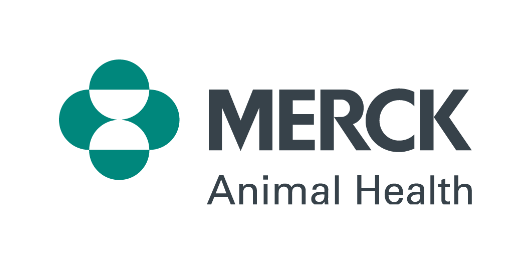Best Practices, Performance Technologies Presented at ADSA-ASAS Joint Annual Meeting
Opportunities for Stronger Economic Returns, Greater Environmental Sustainability
SUMMIT, NJ – July 23, 2013 – The beef industry faces the challenge of producing enough affordable beef to meet the nutritional requirements of an ever-growing global population. This is being accomplished through best practices that positively impact both the environment and economics.
Jude Capper, Ph.D, Affiliate at Montana State University and Adjunct Professor at Washington State University, presented three posters highlighting best practices at the joint annual meeting of the American Dairy Science Association (ADSA) and the American Society of Animal Science (ASAS) earlier this month. The posters are based on three different studies and look at parasite control, calving rates and use of technologies. They highlighted key best practices within U.S. beef production that help farmers achieve optimum productivity to balance environmental responsibility and economic viability.
Dr. Capper’s first poster focused on effective parasite control as a means of impacting reproductive efficiency. Parasite control enables an animal to perform more efficiently – expending energy on calf development and producing beef rather than immunological defense. Her study results show that pregnancy rates decreased by as much as 10 percent and growth weight from birth to slaughter decreased up to 16 percent when parasite control was not utilized. The data shows that the use of an effective parasite control program means that the extra boneless beef produced from the average U.S. 40-cow beef herd would supply 19 families with their annual beef demand.
Given the importance of reproduction in sustaining the industry, Dr. Capper’s second poster addressed the calving rate within U.S. beef production to better determine its potential impact.
“The cow-calf industry is the foundation of the U.S. beef industry and improved reproductive performance has long been cited as a way to improve the economic viability of beef production,” she said. “Even with the current decline in the national herd size, if we can maintain or increase our beef supply from a smaller herd, we improve both environmental and economic sustainability through more efficient use of resources.”
Comparing the ideal calving rate of one live calf per cow per year (100 percent) to the calving rate in South America at 60 percent of the ideal, Dr. Capper noted that the number of animals needed to produce the same amount of beef goes up by 43.8 percent. At the same time, land use increases by 53.2 percent, water use by 34.1 percent and production costs and carbon emissions increase by 36.3 and 45.5 percent respectively.
The third poster centered on technology – a critical factor helping farmers to do more with less. According to Dr. Capper’s study, the use of steroid implants and beta agonists mean that fewer cattle are needed to produce more high-quality beef for consumers, and there is a smaller carbon footprint.
According to Dr. Capper, “The research data demonstrates that parasite control, calving rate and the use of technologies (steroid implants and beta agonists) all play a role in the industry’s ongoing efforts to find better ways to provide a consistent supply of quality beef while keeping it affordable for consumers.”
For more information about the posters and the ASDA-ASAS joint Annual meeting, please visit: http://www.jtmtg.org/2013/. The three posters are available for download as PDFs at http://wsu.academia.edu/JudeCapper/Posters
About Merck Animal Health
Today’s Merck is a global healthcare leader working to help the world be well. Merck Animal Health, known as MSD Animal Health outside the United States and Canada, is the global animal health business unit of Merck. Merck Animal Health offers veterinarians, farmers, pet owners and governments one of the widest ranges of veterinary pharmaceuticals, vaccines and health management solutions and services. Merck Animal Health is dedicated to preserving and improving the health, well-being and performance of animals. It invests extensively in dynamic and comprehensive R&D resources and a modern, global supply chain. Merck Animal Health is present in more than 50 countries, while its products are available in some 150 markets. For more information, visit www.merck-animal-health.com.
Merck forward-Looking Statement
This news release includes “forward-looking statements” within the meaning of the safe harbor provisions of the United States Private Securities Litigation Reform Act of 1995. These statements are based upon the current beliefs and expectations of Merck’s management and are subject to significant risks and uncertainties. If underlying assumptions prove inaccurate or risks or uncertainties materialize, actual results may differ materially from those set forth in the forward-looking statements.
Risks and uncertainties include but are not limited to, general industry conditions and competition; general economic factors, including interest rate and currency exchange rate fluctuations; the impact of pharmaceutical industry regulation and health care legislation in the United States and internationally; global trends toward health care cost containment; technological advances, new products and patents attained by competitors; challenges inherent in new product development, including obtaining regulatory approval; Merck’s ability to accurately predict future market conditions; manufacturing difficulties or delays; financial instability of international economies and sovereign risk; dependence on the effectiveness of Merck’s patents and other protections for innovative products; and the exposure to litigation, including patent litigation, and/or regulatory actions.
Merck undertakes no obligation to publicly update any forward-looking statement, whether as a result of new information, future events or otherwise. Additional factors that could cause results to differ materially from those described in the forward-looking statements can be found in Merck’s 2012 Annual Report on Form 10-K and the company’s other filings with the Securities and Exchange Commission (SEC) available at the SEC’s Internet site (www.sec.gov).
